This article has partner links that I may receive compensation from at no cost to you. Thank you for supporting my site by using them!
I love baseball. I’d always wanted to attend a Japanese baseball game, as I’d heard that the unique experience is nothing like watching a game in the United States. One of the reasons why I decided to go to Fukuoka (other than it being the home of tonkotsu ramen) was that the city is home to a Nippon Professional Baseball (NPB) team, the Fukuoka SoftBank Hawks. Their home schedule happened to coincide with my trip, so I was able to attend two games.
Obtaining tickets to a Japanese baseball game isn’t easy. The difficulties aren’t due to scarcity of tickets, but rather that ticket sites are only in Japanese, and most of them only accept Japanese payment methods. There are services available that will help foreigners buy tickets, but they can be costly. If you don’t want to risk a particular game being sold out beforehand, find a professional service. As for me, I didn’t want to do this option, so I expected that I would have to buy a ticket on the day of the game.
Buying Fukuoka Softbank Hawks Tickets
There are a couple of easy ways for foreigners to buy Fukuoka baseball tickets. Nowadays, the easiest way is likely via purchasing a voucher via Klook.
The other way is through the Fukuoka Softbank Hawks app. I figured out a couple of weeks before the game that Fukuoka SoftBank Hawks tickets can be purchased through their app, which you can find by searching for “Fukuoka Softbank Hawks.” The app accepts foreign credit cards. Just be sure to use a credit card with no foreign transaction fees. The app is still in Japanese, so you will need to translate. Google Translate will work just fine for this. Just copy and paste all of the Japanese text into Google Translate, and you should be able to figure it out.
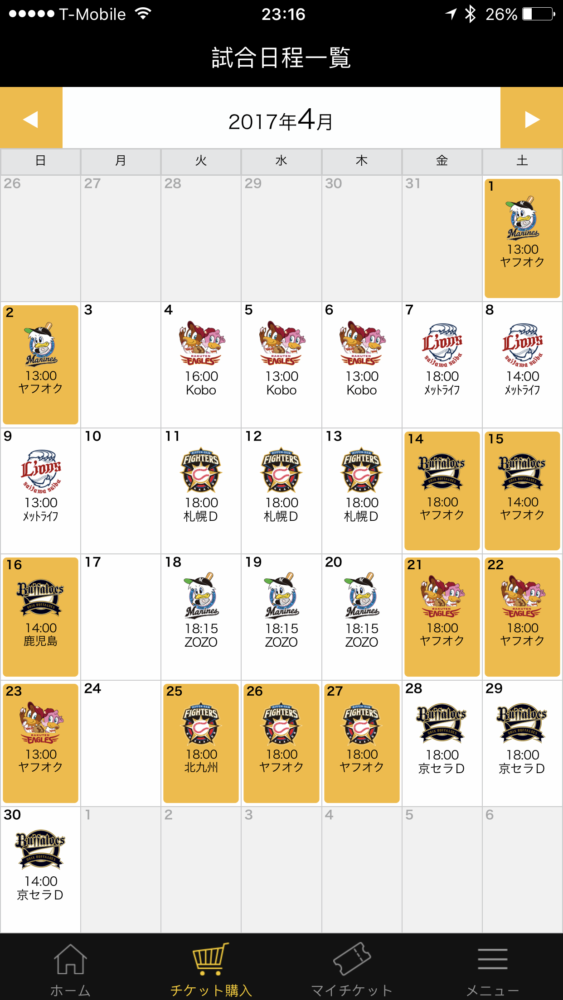
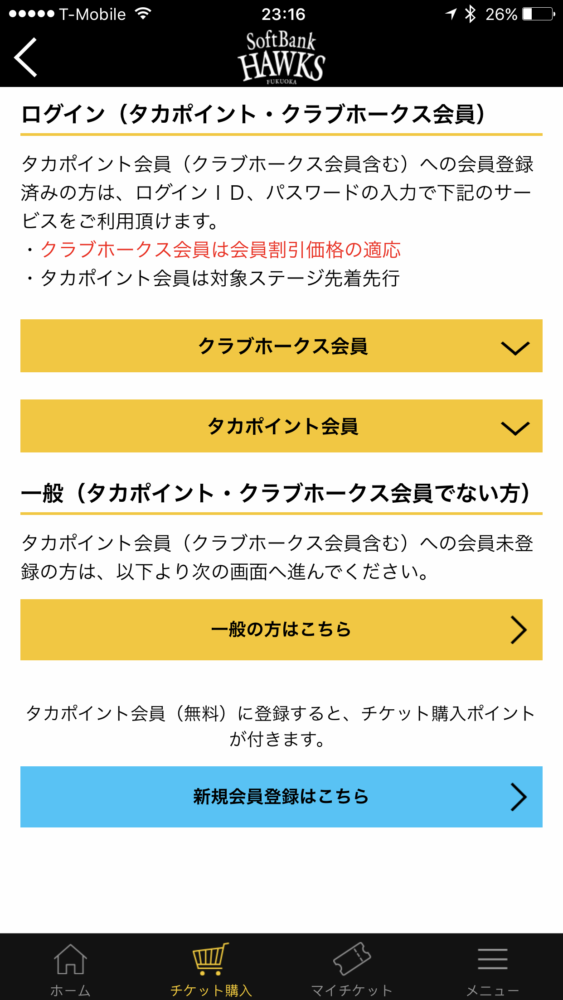
It will likely take you a few attempts to get everything working properly. If there’s a place where your own info isn’t accepted, use your hotel’s info. The tickets are digital, eliminating any need to deal with shipping or will call.
Book your hotel in Fukuoka now!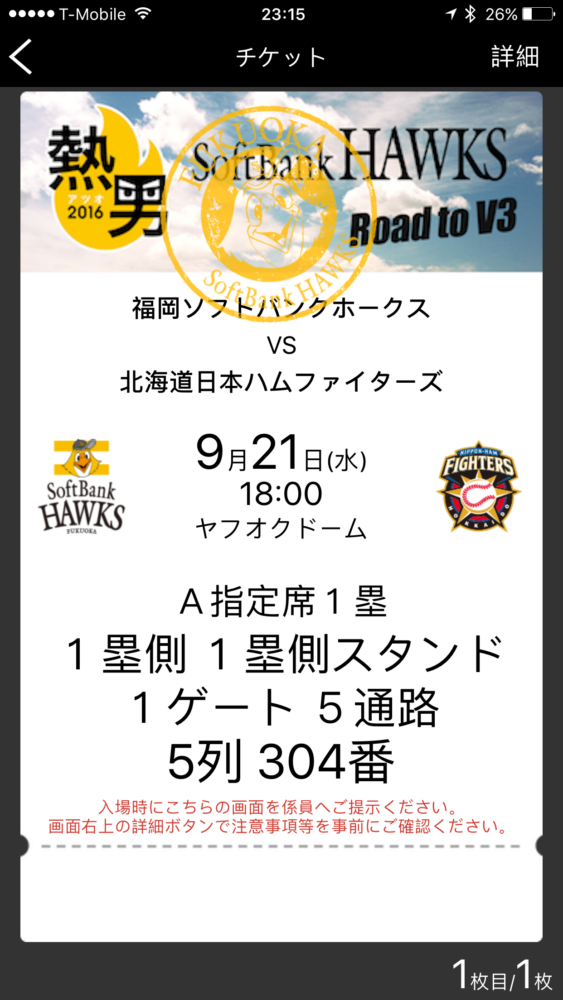
Watching the Fukuoka SoftBank Hawks at the Fukuoka PayPay Dome
The Fukuoka SoftBank Hawks play in the Fukuoka PayPay Dome. The stadium is located along the water, northwest of central Fukuoka. Getting to the ballpark isn’t too difficult, but depending on the size of the crowds, the walk from Tojinmachi subway station takes 15-25 minutes.
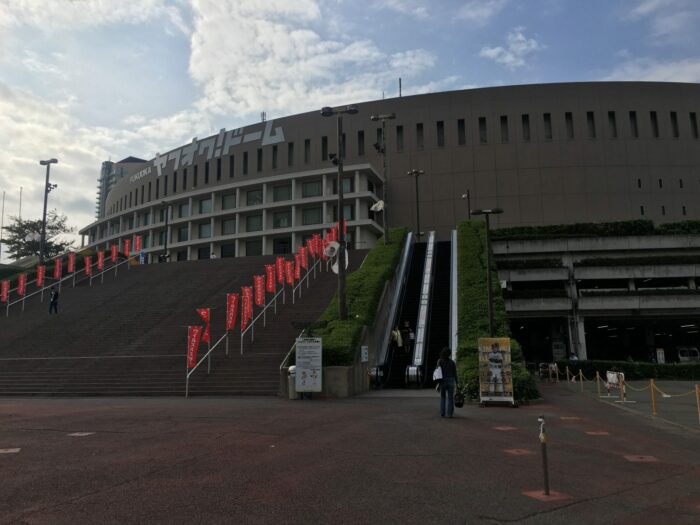
Since it was my first Japanese baseball game, I wanted to take in the whole experience. I arrived about 2.5 hours before the game, so the gates weren’t open yet. There were open souvenir shops outside.
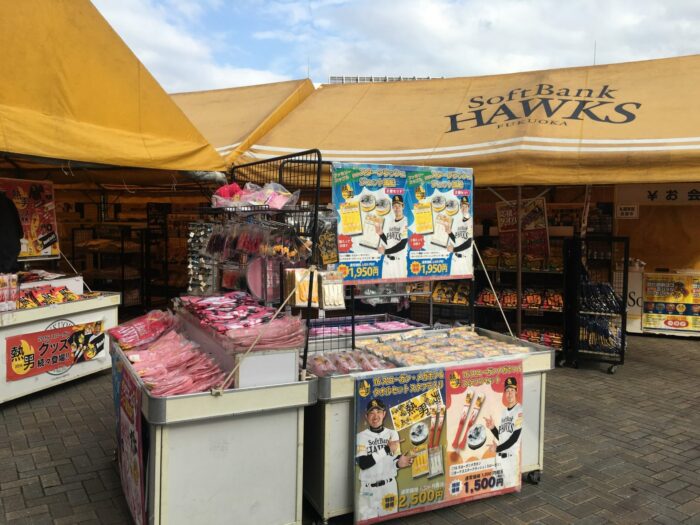
Plus there was this Colonel Sanders statue dressed in Fukuoka SoftBank Hawks gear.
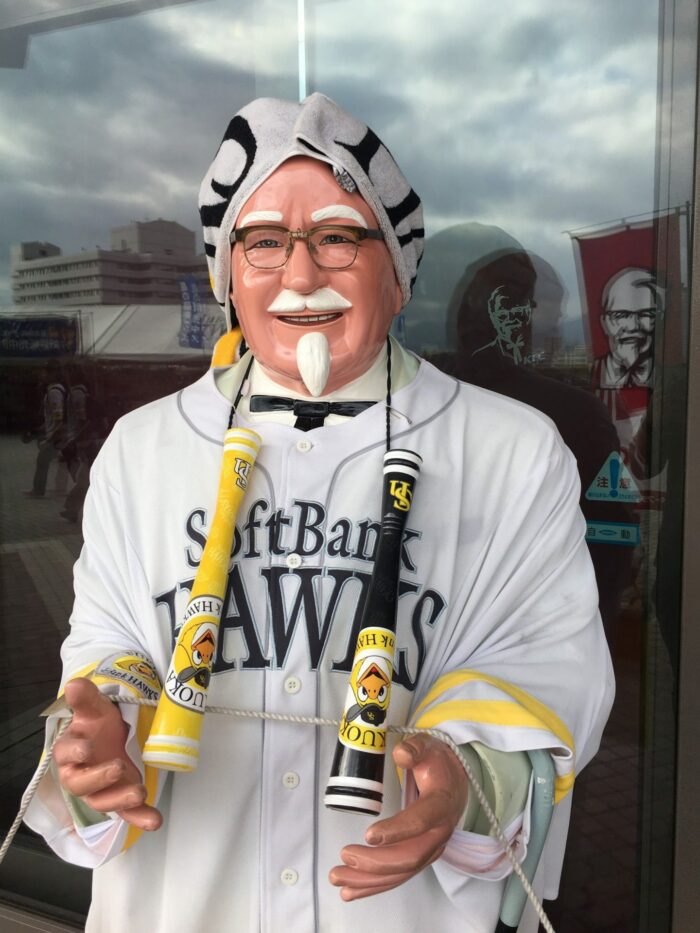
A little while after the gates opened, I headed inside. I had been concerned that I might not be able to bring my camera in, but I had no problems. The security staff didn’t even search my bag. I had no issues with the ticket app either. Outside food & drink is not allowed into the ballpark, but there is a market right outside if you want to have some drinks & snacks before you go in. That said, if you’re expecting typical American ballpark prices, you’ll be pleasantly surprised by how reasonably everything is priced in Japan. There was typical ballpark food (including two types of churros), but also Japanese items as well. It’s Fukuoka, so of course they had tonkotsu ramen.
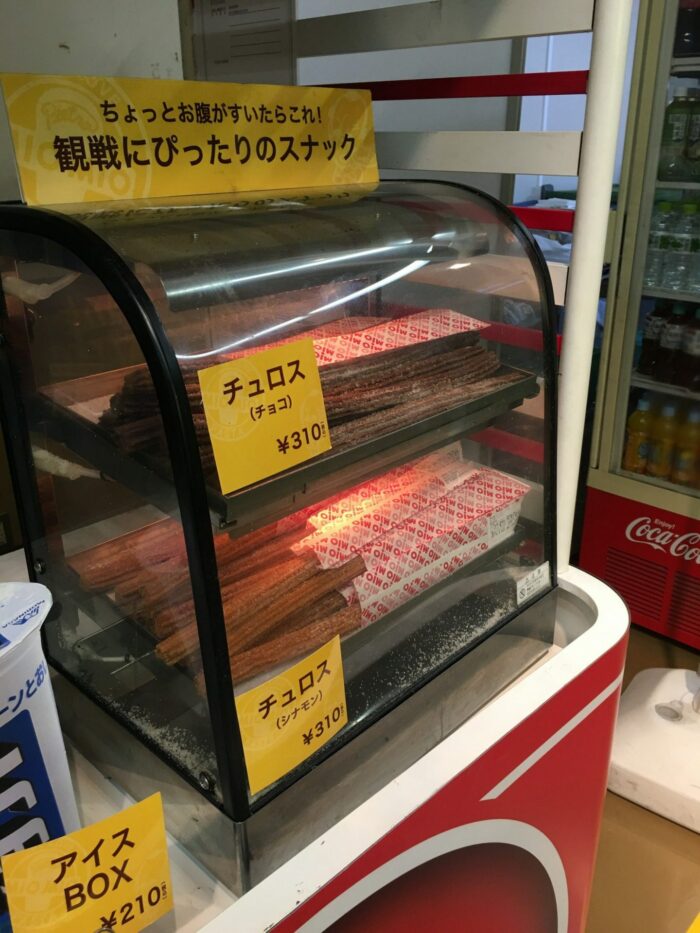
As far as beer, there were a couple of beers that strayed into craft territory, Tokyo black porter and Yona Yona ale, though they were from Kirin. Just like in American stadiums, there were vendors walking around each section, but here, there were girls dispensing beer out of giant backpacks.
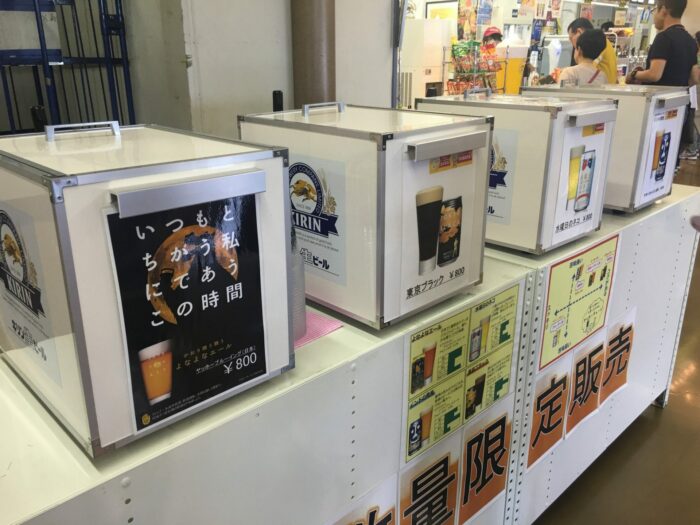

It was immediately obvious that this would not be like attending a baseball game back home. There was a video featuring one of the Hawks players demonstrating how to eat. All ballparks should do that. There was a giant poster of a cheering dog above the upper deck.

I got to my seat just as batting practice was starting for the visiting Nippon Ham Fighters. The Fukuoka PayPay Dome is retractable, but it was closed for both games I attended. My seat was close to the action, though it was behind netting. Between the net & there being another field level section in front of me, the view may have actually been better a bit higher up. During batting practice, I noticed that there were periodic whistles. It took me a while to realize that the whistles were coming from ushers who were warning fans about foul balls & home run balls during batting practice. If you hear a whistle, you know to be aware.
Batting practice for the Hokkaido Nippon-Ham Fighters ended about an hour before the game. Unexpectedly, the SoftBank Hawks then came out for warmups themselves. In the United States, warmups like this only happen right before the game, but they were out much longer. By this point, fans were already waving flags in the bleachers.
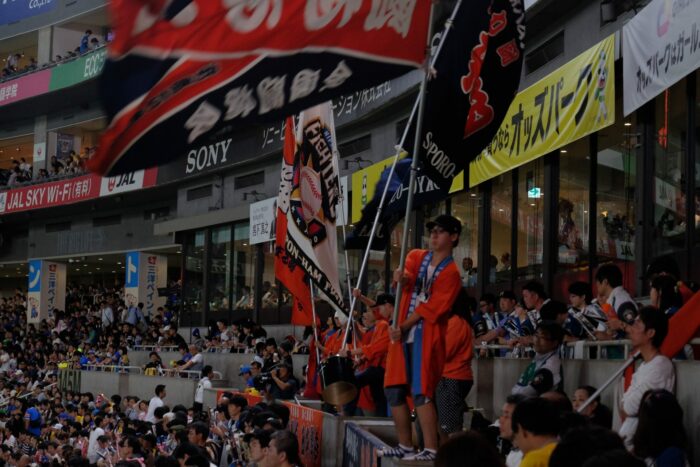
Crowds at Nippon Professional Baseball games are nothing like those in the United States. I mean this in the best way possible. Playing styles might differ slightly around the world, but the core game remains the same. Fan behavior is where Japanese fans truly make the atmosphere unique.

Visiting fans have their own special section. This isn’t just a place for fans to sit together; it’s also where chants and songs are led. There were people with horns and drums that could be heard from anywhere in the stadium. In between innings, songs played while a video of a guy hitting baseballs to the beat played on the Jumbotron. Fans would clap or hit plastic bats together to the beat.
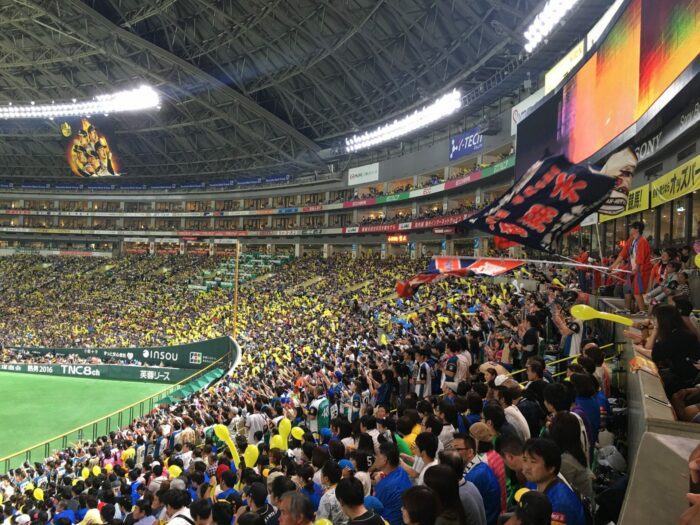
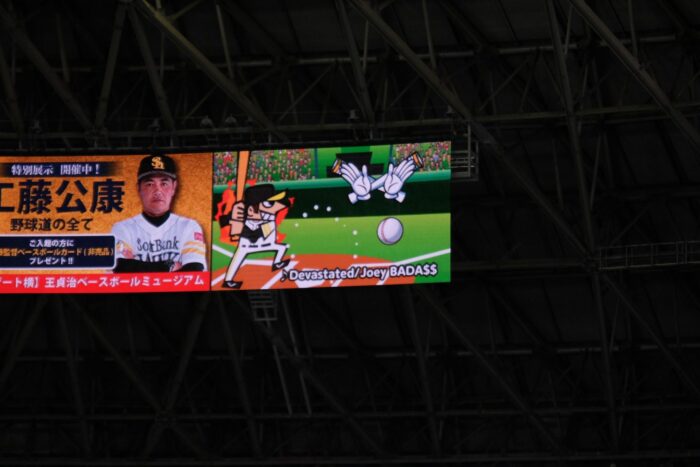
At MLB games, each player has their own walkup music, but then aside from cheering fans, it’s mostly silent during their at-bat. This isn’t the case at NPB games. Each team’s fans play music when their team is batting. During the 2nd game that I attended, I realized that not only are the fans singing while the team bats, but each player also has their own special song. Never have I wanted to be a professional baseball player so badly.
As for the game itself, it was a good one. The biggest star in Japanese baseball is the former Hokkaido Nippon-Ham Fighters’ star Shohei Ohtani. He was only 22 years old when I first saw him play, but there was already talk about when he would come over to the United States to play. Ohtani is truly a special player because not only is he an outstanding pitcher, but he’s also a great hitter. Suffice to say, he’s now gone on to incredible Major League success since moving to the United States.
After seeing Ohtani play, I was impressed. He pitched 8 innings while striking out 8 Hawks, giving up just 1 run on 4 hits. Oh, and he also added a double. Teammate Brandon Laird hit his 38th home run of the season to give Hokkaido a 2-0 lead in the 2nd inning. Fukuoka wouldn’t get on the board until the 5th inning, pulling within one run.
During the 7th inning stretch, Fukuoka fans simultaneously release balloons into the air. It looks pretty cool, even if the balloons do resemble giant yellow sperm.
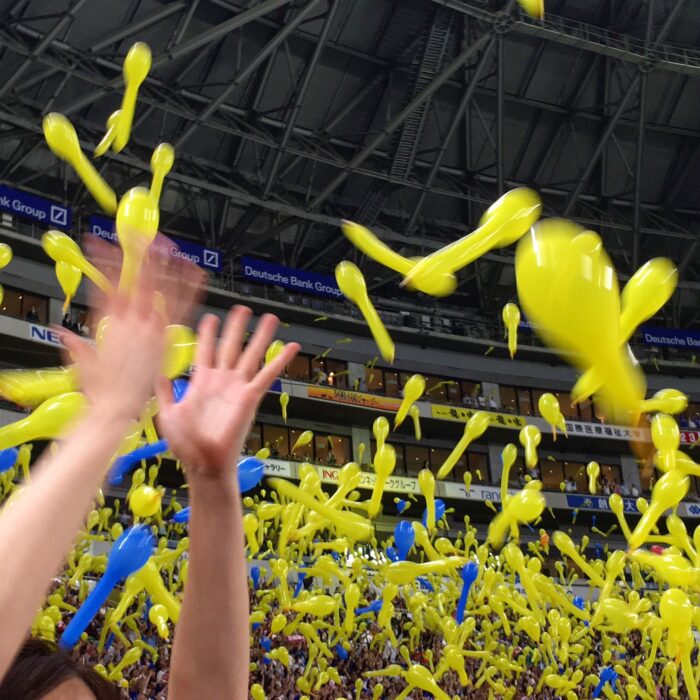
In the bottom of the 9th, Fukuoka came to the plate still down a run. A leadoff double served as a great start to the inning. The next batter was hit by a pitch. A sacrifice bunt put runners on 2nd & 3rd with one out. Hokkaido then made a pitching change and got a strikeout for the 2nd out. It was all up to the final batter of the game. A hit would bring in two runs, winning the game Fukuoka. The batter drove a deep fly ball, sending the outfielder further and further back as the crowd roared in excitement.
It was caught at the wall, ending the game. Hokkaido beat Fukuoka, 2-1. Everyone shuffled out, heading back down the crowded narrow paths to the subway station. It took much longer to get back to the subway than it had to get to the stadium. At least there was no wait to get on a subway train once I did get to the station.
There are about 27 mascots right now, plus cheerleaders. One of the mascots appears to be dead. Nobody is concerned pic.twitter.com/dYTTex0FwJ
— Jonathan Sacks (@JonathanSacks) September 21, 2016
The next day I headed back to the stadium for my second Japanese baseball game. This time it was a day game with a 2 pm start. Since I had been there the previous day, I didn’t need to go inside early. Instead, I went to the Sadaharu Oh Museum, which is attached to the Fukuoka PayPay Dome. The museum is located beyond the outfield. There’s a nice view of the entire ballpark out of its windows.
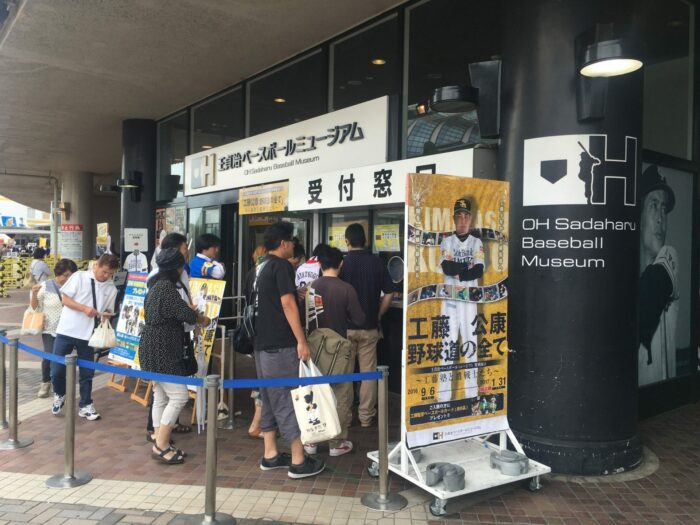
The first half of the museum focuses on the life of Sadaharu Oh, one of the greatest baseball players of all time. His 868 home runs in the NPB are the most of any professional player in the world. While he didn’t play in Fukuoka, he was the manager of the team for a long time after his playing career ended.
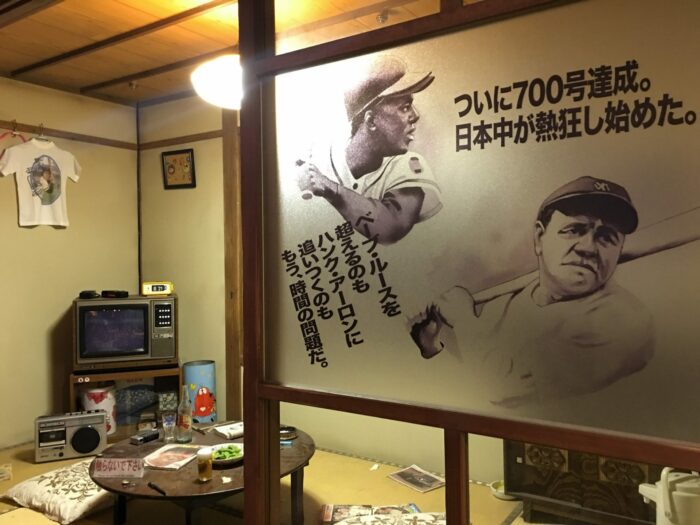
The museum is mostly in Japanese, but baseball translates well. There is also an iPhone audio guide available. Oh’s career with the Yomiuri Giants spanned the 60s & 70s, so in addition to covering Japanese baseball, the museum is a time capsule of that era in Japan. There were plenty of videos of Oh’s career milestones, including when he hit his 756th home run to pass Hank Aaron.
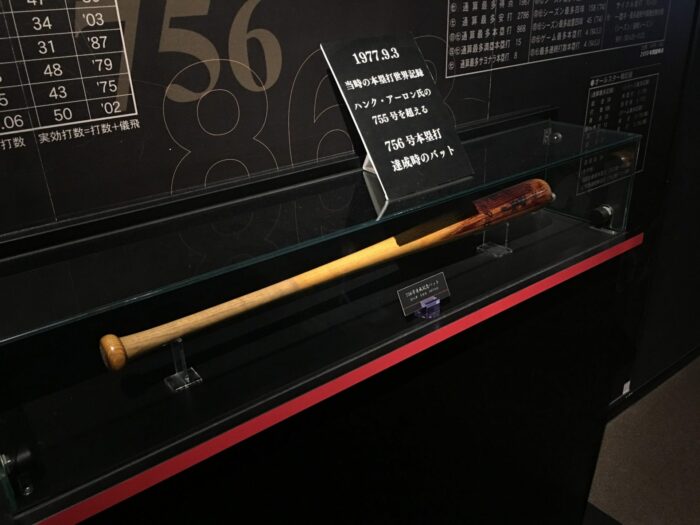
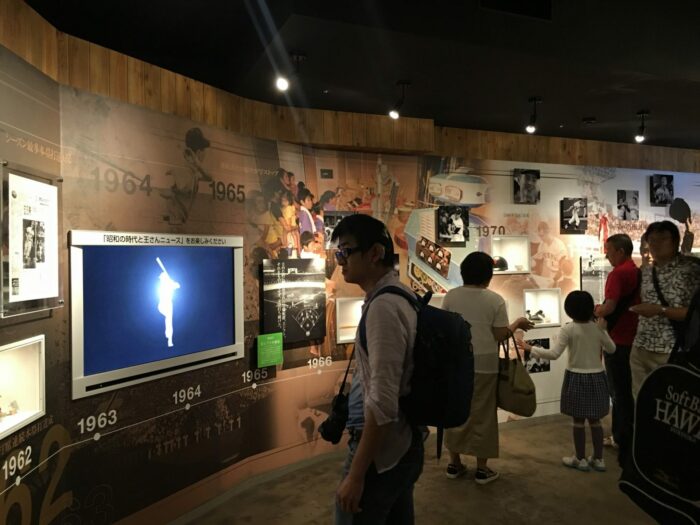
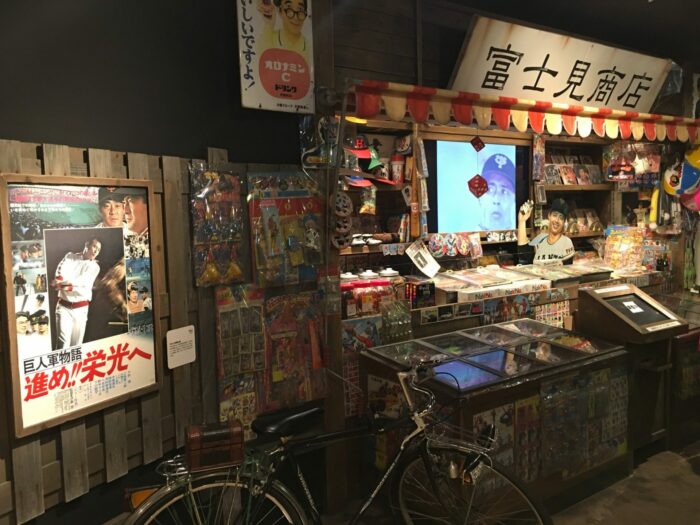
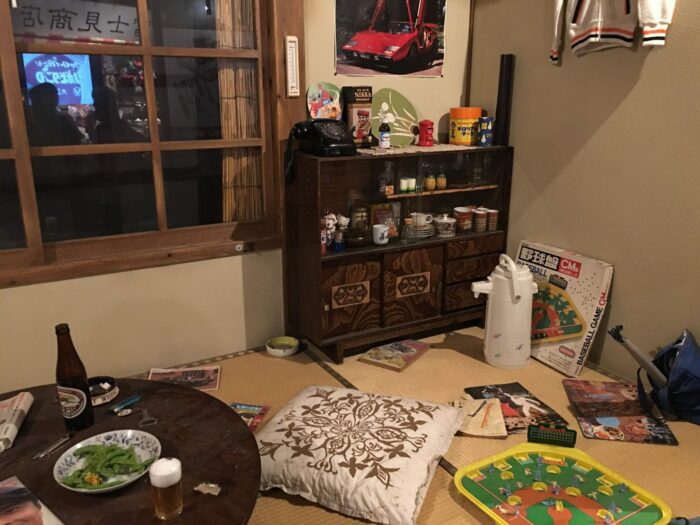
The other half of the museum is about the history of baseball in Fukuoka. Beyond the rooms housing the gift shop, memorial hall, & awards and trophies, there was a nice interactive play area. You could crouch where a catcher would to get a sense of how fast pitches travel, and kids could practice pitching & hitting.

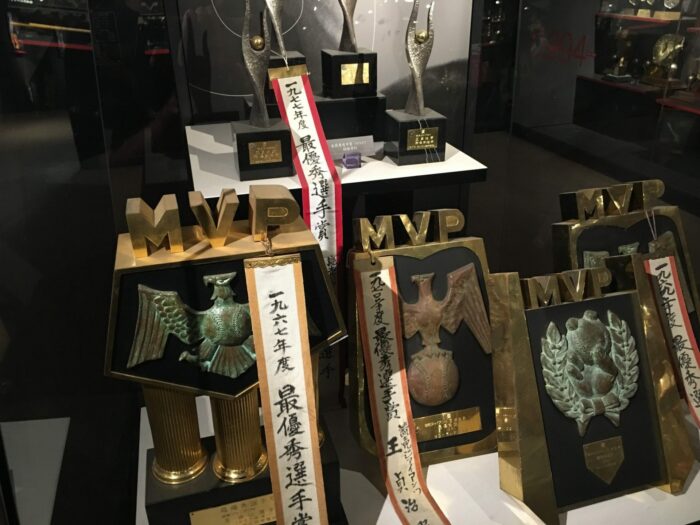

The whole place takes perhaps an hour to see, and admission is 1000 yen. If you’re going to a game, the Sadaharu Oh Museum is worth seeing beforehand, but unless you’re a massive baseball fan, you might not want to go out of your way to see it if there’s no game that day.
As for my 2nd Fukuoka SoftBank Hawks game, my ticket was in the standing-room area. When I bought my ticket there were very few tickets available, so I had gone with whatever I could get. Of course, there was then far better availability through the app a few days later. The standing-room area is in the outfield. People with those tickets know to bring their own chairs and picnics. Almost every spot was taken by the time I got to the section. The only one I could find was standing in front of a child. I felt bad that I was blocking his view a bit, but at least he was on a level a couple of feet above me. In addition to having a great view of the entire field, the standing-room section was right near the visiting Hokkaido fans.


It was another good game, but the home Fukuoka fans left disappointed again after a 5-2 loss. The two sides were two of the top teams in Japanese baseball in 2016, so it was a hard-fought series with packed crowds for both of the games I went to. This time I participated in the balloon release during the 7th inning stretch, thanks to a couple of nice girls standing next to me who offered me a spare balloon.
If you’re a baseball fan, I highly recommend going to see a Japanese baseball game. The quality of the competition is good, and the crowd is unlike anything you’ll see in the United States. In fact, the constant energy of the fans might spoil you on just how great an atmosphere can be. Attending a Japanese baseball game in Fukuoka was a unique experience that I will never forget.
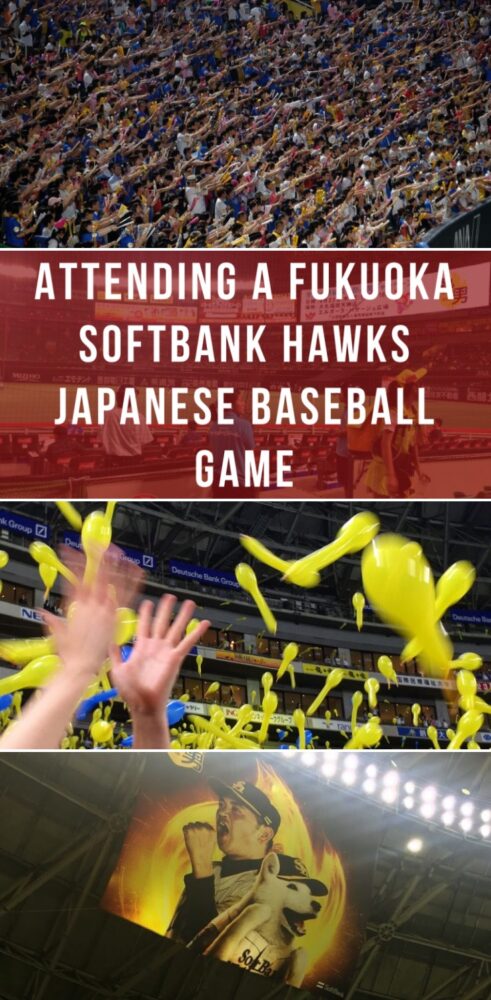

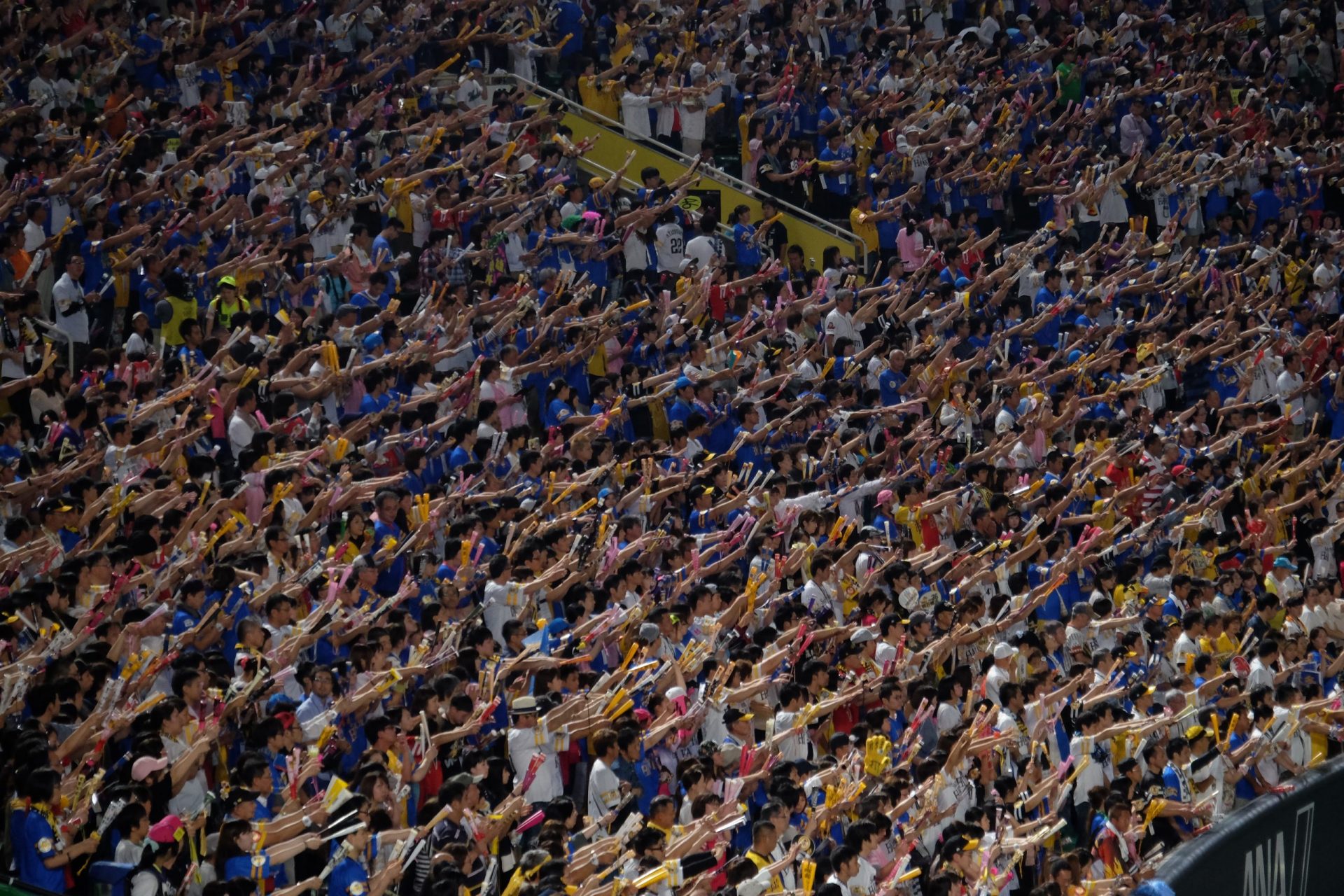
Great info. Feel free to check out my own review of Japanese baseball stadiums here: https://www.flyertalk.com/forum/japan/1791484-jphripjah-reviews-japanese-baseball-stadiums.html
Fu-san would be the “dead” mascot. He’s … well, he’s definitely not your average mascot. (He’s meant to represent the white balloons released for a victory). And it’s a shame we didn’t win either game you saw since the post-game goings-on are interesting too: always at least 1 player of the game, who will get interviewed and do a lap of the 1st base side (pitcher Dennis Sarfate brings his little girls on that lap) and do a high-five with a group of lucky fans. And then there’s fireworks. Yes fireworks, inside the dome. Only a handful of games, usually after the rainy season, are played with the dome retracted. It feels odd to be there and see the sky.
Thanks for the background info! I wondered how often the dome is opened. The weather was fairly cool & dry for those two games, but there had just been a typhoon that passed a couple of days prior. I just looked to see how they did this year, good luck in closing out the Japan Series! I bet the atmosphere at those games is amazing.
Thanks for the great info! I happened to be in town at the Hilton next door and inquired about tickets for a game that evening. I was able to go up to the ticket window at Gate 7 and purchase a ticket for that evening’s game. A reserved seat for $10. Looking forward to seeing the game and being part of the energetic crowd.
It’s so interesting to me to see how far baseball has spread. It’s hard to believe that the sport is being played on the other side of the world. So cool!
Thanks for sharing! Headed that way next Spring and always wondered what a baseball game would be like in Japan. Now I know it’s a must!
You’re welcome! Every baseball fan should go see a game in Japan if they can!
This looks amazing, thank you for all the great info. We live in Seoul and go to LG Twins games here frequently after finally having figured out how to buy tickets. Would love to pop in for a Hawks game next weekend when in Fukuoka.
When you signed up for the app, did you have to sign up for the Taka Point Membership or were you able to pay as a guest? I only get the membership option and get stuck on the email address linked to mobile phone (everything else I put the hotel as you suggested)
You’re welcome! KBO games are great too, I went to a Doosan Bears game when I was there. Unfortunately, I don’t know about the Taka Point Membership. That must be something new they’ve introduced since I was there